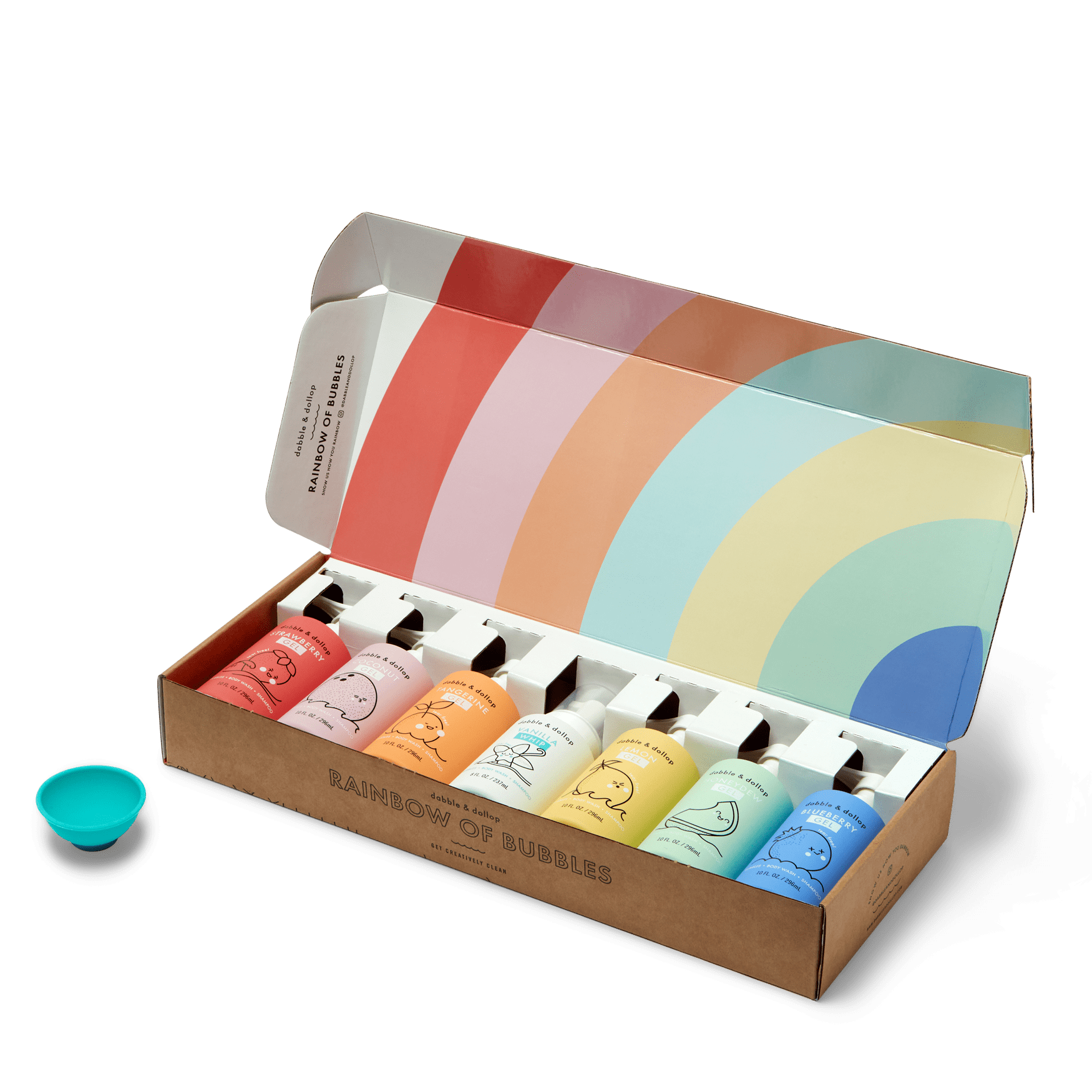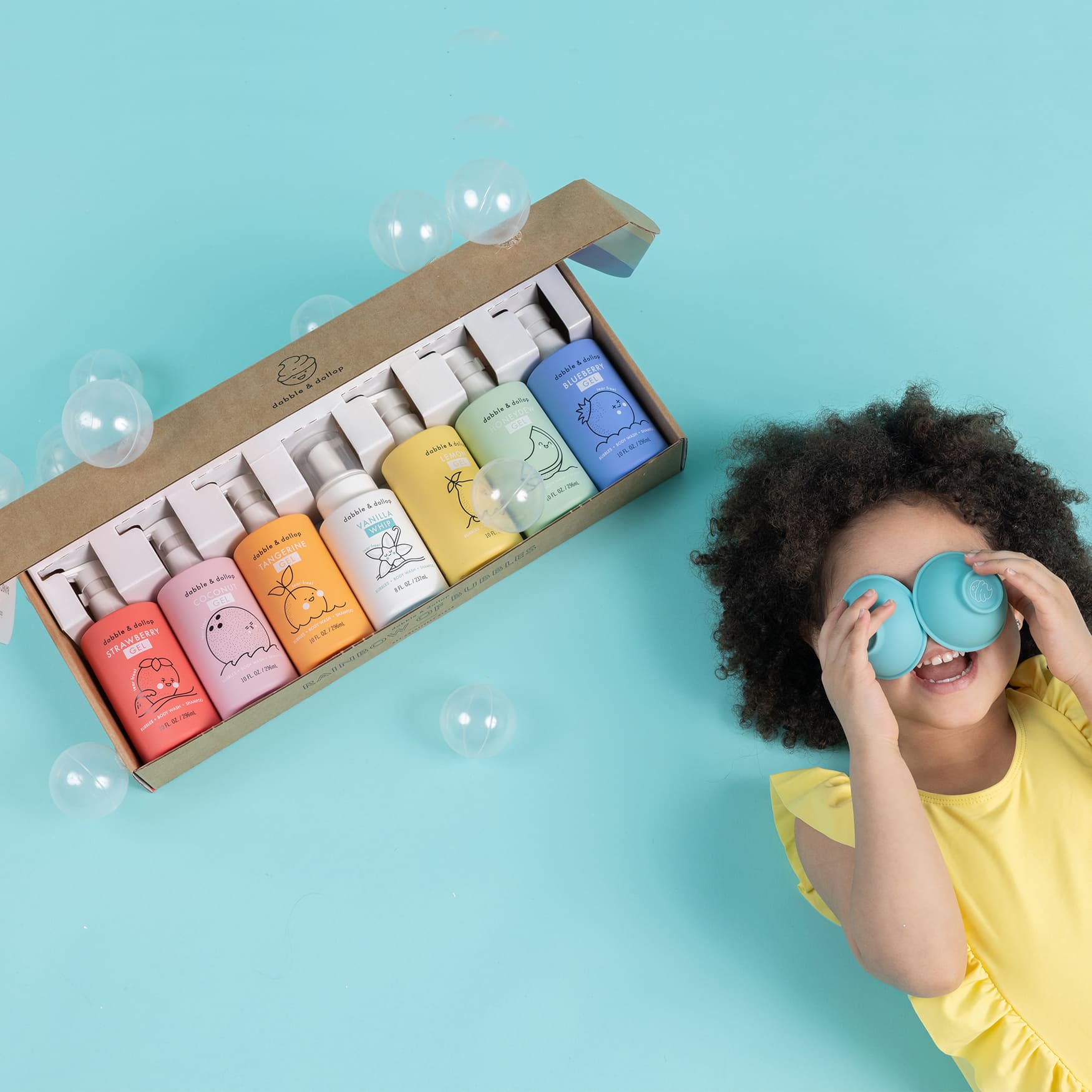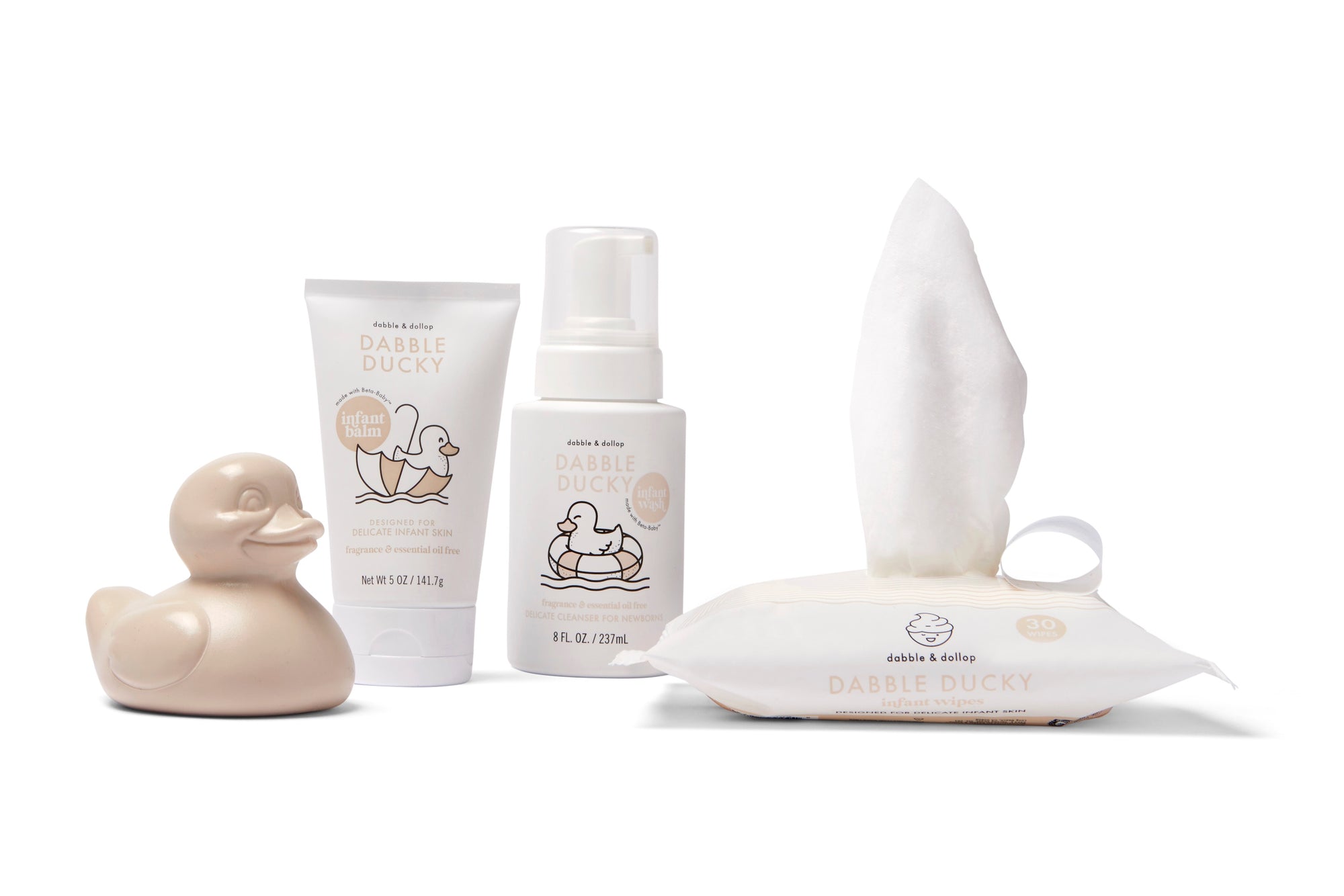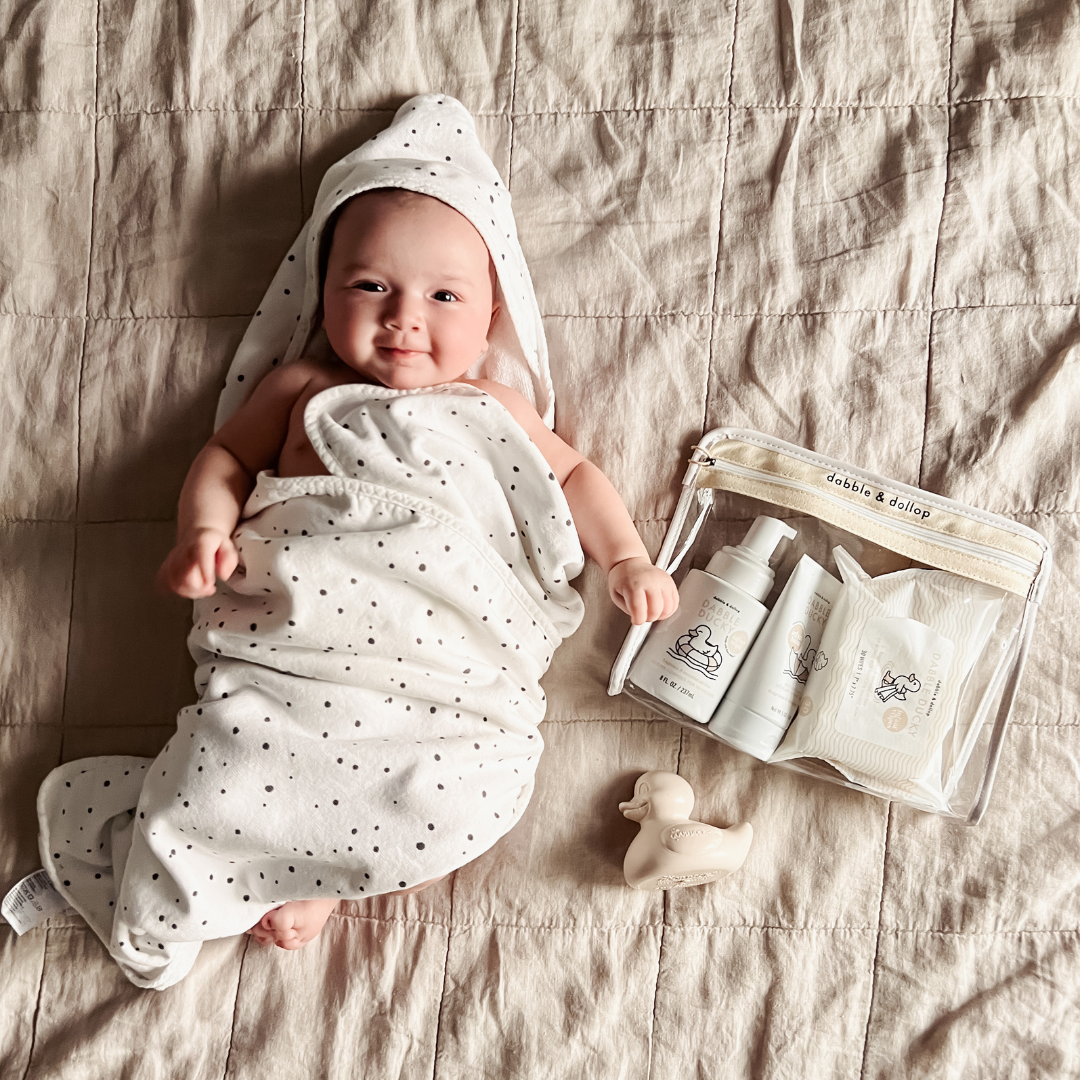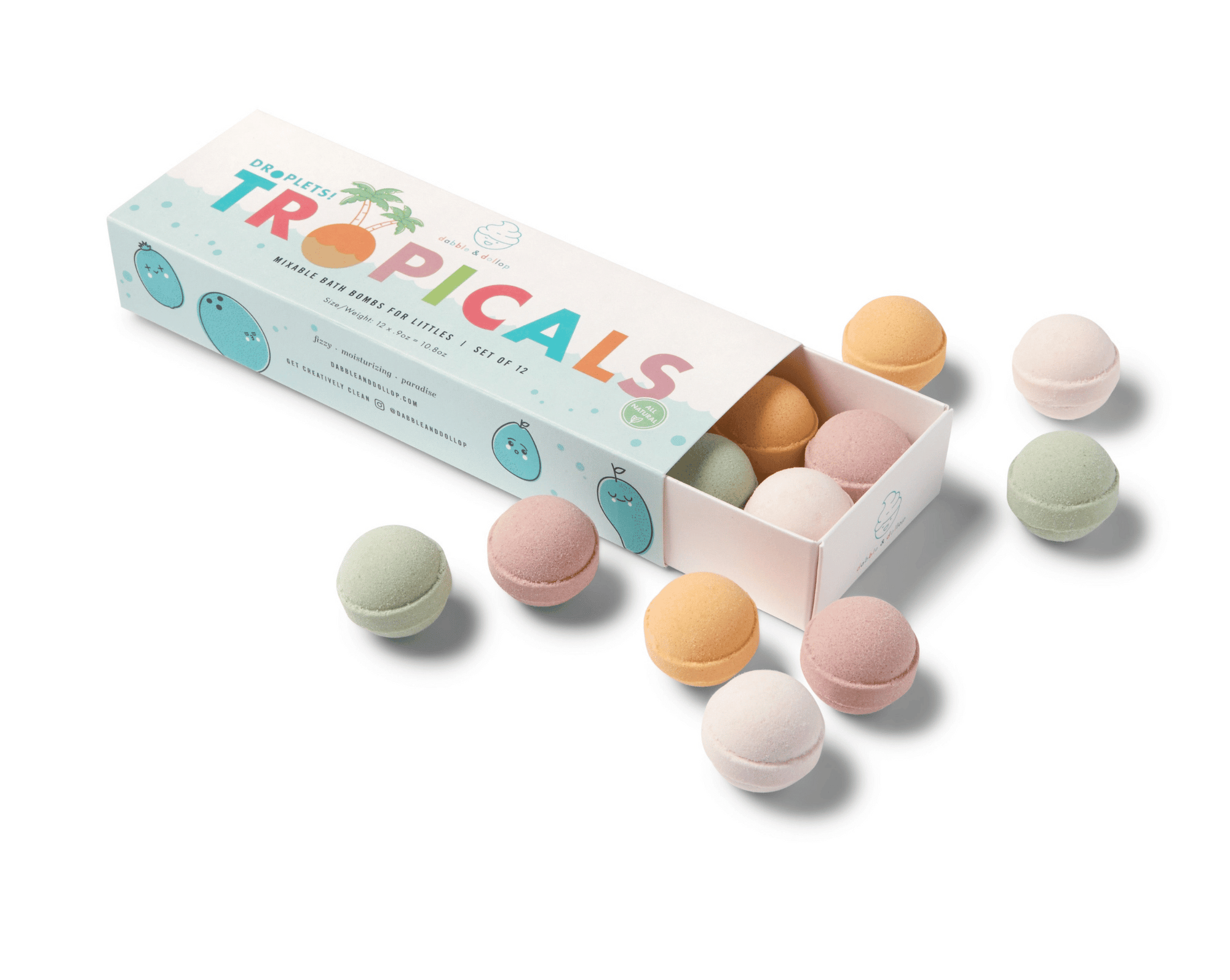
The Evolution of Ingredient Science in Shampoo for Kids
Background
Back in the 1960’s when there was far less choice and information available for parents, bathing and care products for newborn babies and children were straightforward and simple. If parents were using any kind of gentle shampoo it was likely J&J’s sulfate and synthetically fragranced product. Or, if a baby had diaper rash, a healthy dose of J&J talc baby powder would be used. Today, almost all parents are aware of the dangers of using harsh cleansers like SLS (sodium lauryl sulfate) on their baby and they certainly don’t use their talc-based baby powder now that is now discontinued because of the 2018 asbestos lawsuit. Today, there are dozens and dozens of brands touting their mild baby shampoos and thousands and thousands of articles, blogs and websites that all together have created complexity in a once simple space. Yes, in the 1960’s things were definitely simpler, however they were not safer.
My father is a cosmetic chemist and he is widely known in the industry as one of the leading experts on mild surfactants – the gentle cleansers that are used specifically for the application of mild baby washes. My father founded his ingredient company in 1987 after decades of working for some of the largest ingredient companies in the world.

The company he founded specialized in the sale of innovative, natural ingredients for the cosmetic and personal care industry and I joined him in 1997. Fast forward twenty years and I was at the helm, running his company. I had taken dozens of cosmetic science and skin biology courses, even becoming the Chair of an industry association that was the largest group of cosmetic chemists. I mention my background, and his, because throughout this piece I will lace in some anecdotal story-telling from our experience that, when combined with the thorough history of ingredient science, you may find enlightening. But mostly, I hope that it will help ease your fears about the products you are using on your babies. As new parents, you have enough to be worrying about!
Ingredients used in the 1960’s in baby shampoo:
Sodium Lauryl Sulfate / Sodium Laureth Sulfate: Sodium Lauryl Sulfate was the industry’s workhorse surfactant back in the 1960’s. Surfactants is a fancy word for “surface active agent” – this is an ingredient that contains both oil-loving and water-loving molecules, which results in the ability to degrease (aka clean) substrates like hair… or your garage floor (gasp!).
This ingredient really started to lose favor in the mid 1990’s and started to be replaced with other ingredients like Sodium Laureth Sulfate. It became the target of a lot of negative press – once people realized it was the same ingredient that could be found in industrial degreasers, the ones that you clean your garage floor with, its days were numbered. Even though the usage level in a shampoo was very low and brands claimed their products were mild, there was no cleaning up the PR mess that was created. Brands started to use Sodium Laureth Sulfate, which is a milder, gentler form of the ingredient. A lot of misinformation and confusion followed. Consumers now knew that SLS was more irritating than SLES. They started demanding that their products be not only SLS free but “Sulfate-free”.

Even though the “sulfate-free” trend of the 1990’s was not based on any real science or sound logic, it stuck. This was really good for my former company, as we sold dozens of alternatives to these older workhorse surfactants. We went on to sell tons of ingredients like Coco Glucoside, Decyl Glucoside, Sodium Cocoamphoacetate, Cocamidopropyl Hydroxysultaine to name a few. Each of these surfactants had even better safety data – the surfactants were milder than ever, however they didn’t foam very well, nor did they “degrease” (aka clean) very well back then.
Today, there are even more mild and gentle surfactants available, some with irritation scores of ZERO, which is truly amazing! There are also ones made from 100% natural derived sources with sustainable production methods as well. In fact, our dabble & dollop products utilize one of the safest, best mild surfactants available today, though it is a mouthful: Sodium Laurylglucosides Hydroxypropylsulfonate. Despite how the name sounds, this is a 100% naturally derived ingredient made from coconut and sugar alcohol. It foams well, it cleans well and most importantly, has ZERO irritation.
Cocamide DEA & MEA/ PEG Thickeners: Thickeners like Cocamide DEA & MEA and PEG thickeners were the workhorse thickeners in the 1960’s. And they remained so until the late 90’s. I know this because my father helped launch the first Cocamide DEA & MEA materials. Then, in the late 90’s I helped sell the ingredients that replaced this old, less safe technology. Cocamide DEA became known as a skin irritant and sensitizer. It was found that in small doses it could cause allergic dermatitis in some people. But what was alarming was that in large doses it was potentially carcinogenic – meaning, it could cause cancer!
This is why this bad boy sits on the Prop 65 list in California – a list of chemicals known to cause cancer in humans. Very quickly, brands switched to Cocamide MEA however the same thing that happened with SLS/SLES happened to Cocamide DEA/MEA. The names sounded too similar and despite the scientific evidence that Cocamide MEA was safe for shampoos, its use slowly dwindled.
Polyethylene Glycol (PEG) The alternatives to Cocamide DEA/MEA were often PEG derivatives. The production of PEG derivatives can create a nasty byproduct called 1,4 dioxane. 1,4-dioxane is a potential human carcinogen. A 2016 report by the Department of Health and Human Services National Toxicology Program (NTP) found that 1,4-dioxane is “reasonably anticipated to be a human carcinogen based on sufficient evidence of carcinogenicity from studies in experimental animals,” although the data available from human epidemiological studies are not adequate to evaluate the relationship between human cancer and exposure to 1,4-dioxane. Rather than take their chances, brands have formulated away from PEG derivatives simply due to the potential negative outcome.
Today, there are plethora of innovative, natural thickeners that are utilized in mild baby shampoos. Xanthan gum is often used and is very safe and mild however it has a gummy, slimy texture that isn’t ideal. However, its definitely safer than Cocamide DEA! For dabble & dollop, we actually didn’t use any thickener to create our shampoos. By selecting the cleanest, purest, highest quality surfactants, we didn’t need to add a thickener to pump our formulas up.
Formaldehyde Donors: Preservatives are one of the most essential elements of a good safe baby shampoo. However, in the 1960’s it was commonplace to use formaldehyde-donors in baby shampoos. Once again, in the 1990’s it became known that Formaldehyde-donors are carcinogens. Preservatives that were used included Quaternium-15, DMDM Hydantoin and Sodium Hydroxymethylglycinate. These preservatives could cause itchy eyes, trouble breathing and cellular damage. Thank goodness these formaldehyde donors are no longer used in the products we use on our children! In fact, I used to sell the ingredients that replaced these nasty preservatives. Today, there are dozens of natural bio-based preservation systems available that are safe and mild for babies. Natural, “soft acid” systems are commonly used today.
Parabens: When I first started working in ingredients in the 1990’s parabens were one of the most commonly used preservatives. There was a 2004 study that showed traces of parabens in breast cancer tissue and, though this study has since been refuted, the damage was done in the court of public opinion.

It is still considered by the FDA and EU to be safe up to .4%, however it is rarely used today due to the negative publicity. As mentioned previously, there are a number of wonderful natural preservation systems available today, that are far more mild to the skin.
Essential Oils & Fragrance After everything you’ve read so far, you won’t be surprised to hear that the Fragrance that was used in the 1960’s was definitely not safer than the fragrance compounds that are used today. Why is that? Over the past four decades, there has been intense self-regulation in the fragrance industry and a growing list of ingredients that are not allowed to be used in fragrance. Fragrance companies now abide by a growing list of “no no” ingredients set forth by the International Fragrance Regulatory Institute. They ban, limit and set criteria for the use of certain ingredients based on scientific evidence and consumer insight. You may be surprised they have banned several natural essential oils due to sensitization, endocrine disruption, carcinogenic potential. Today you won’t find ingredients like calamus oil, Peru balsam, or Lilial, for example.
Another chemical compound that came under intense scrutiny in recent years is phthalates. The phthalate that is commonly used in fragrance is DEP as it is used as a solubilizer.

While this ingredient has not been banned, it is easily avoided today. It is not necessary to use phthalates as there are suitable bio-based ingredients that can easily replace its function in a fragrance compound. Parents have grown weary of this ingredient and I feel it is only a matter of time before it is banned.
I should note that none of dabble & dollop’s natural fragrance compounds contain phthalates.
As you can see, dangerous ingredients have been banned or are no longer utilized in the industry, making the baby/child shampoos you are using today safer than they’ve ever been. Ingredient innovation and quality is at an all time high in the industry. With the plethora of brands you can choose from today, its easier than ever to make good choices. Moving forward, I see continued progress being made. The Modernization of Cosmetics Regulation Act of 2022 is the most significant expansion of the FDA’s authority to regulate cosmetics since the Federal Food, Drug and Cosmetic (FD&C) Act was passed in 1938. This will include new essential oil and fragrance allergen labeling requirements and an improved safety substantiation process.
Having spent over twenty years working in ingredients, I’ve learned one very important thing. Less is more. This is why I stripped down dabble & dollop formulas and don’t include commonly used ingredients like thickeners, pearlizers, dyes, silicones, allergenic extracts & oils, etc. Its logical to reduce the amount of chemical exposures in our environments. There’s still a lot that is unknown about long-term exposures to certain chemicals. We’ve created washes that work tremendously well, are tear-free, all naturally derived and super safe for the little ones. And we’ve done it with less than 10 ingredients that are all well-documented to be safe.



